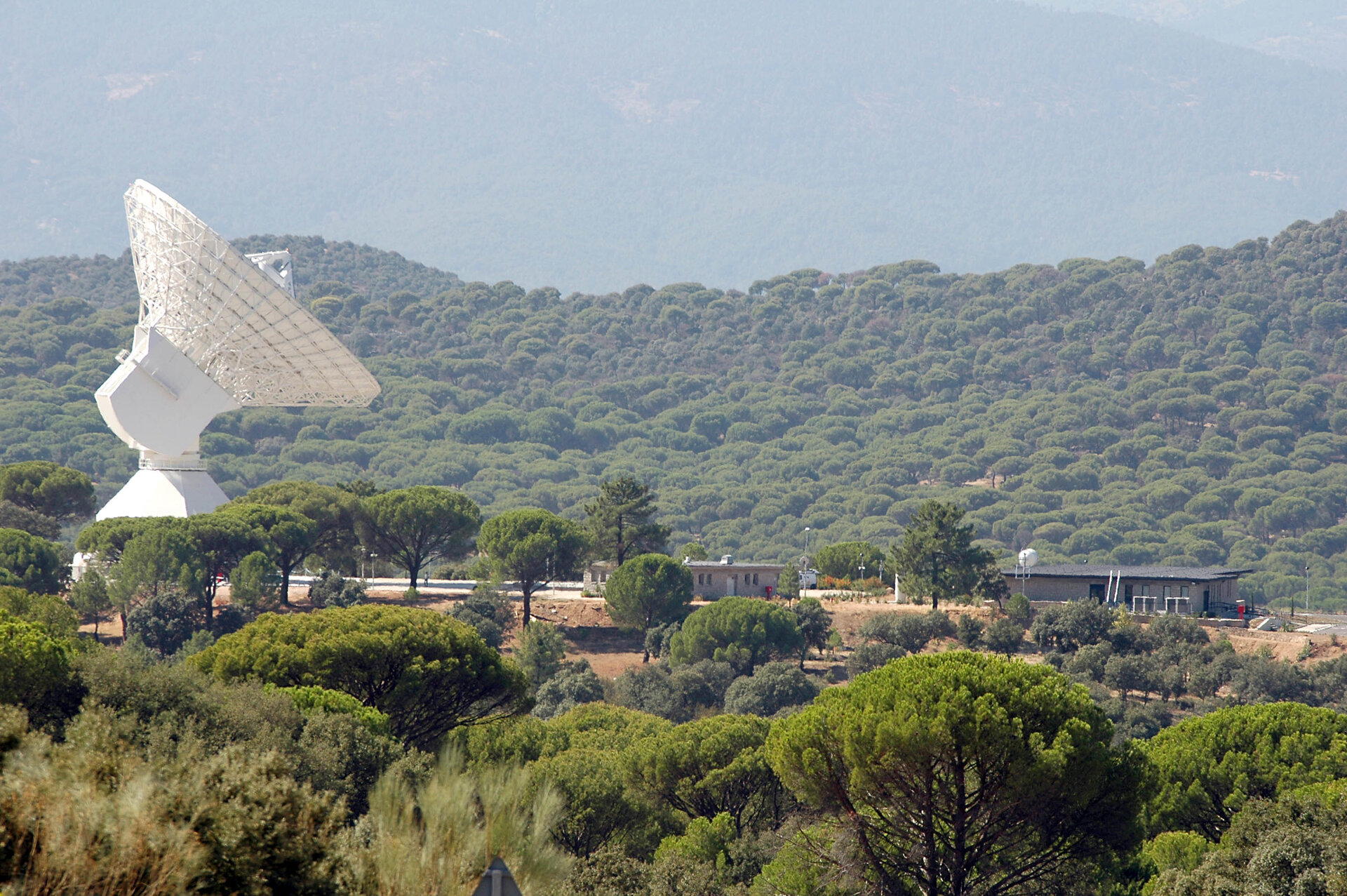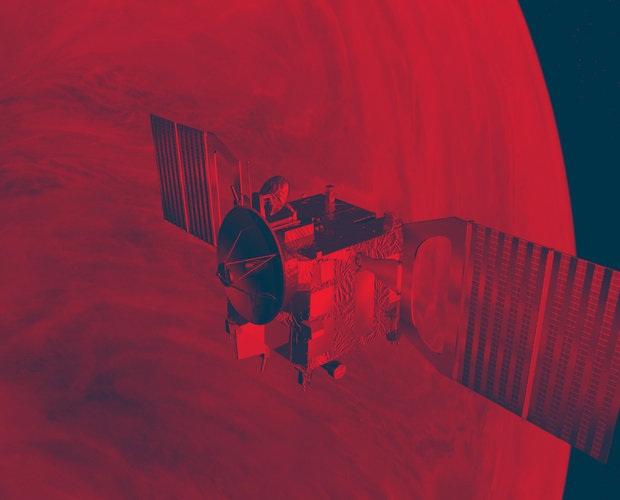ESA’s new deep space antenna in Cebreros becomes a reality
ESA PR 40-2005. ESA’s new deep space radio antenna in Cebreros (Ávila, Spain) will be officially inaugurated on 28 September. The new 35-metre antenna is ESA’s second facility devoted to communications with spacecraft on interplanetary missions or placed in very distant orbits. Cebreros’ first task will be that of tracking ESA’s Venus Express spacecraft, due for launch in October.
Until three years ago, for missions requiring such a facility, ESA had to rely on NASA’s Deep Space Network. ESA’s Science programme for the next decade includes many deep space missions, and independent access to deep space was identified as a necessity. In 2002, ESA’s first deep-space antenna, located in New Norcia, Australia, began operations.
The official opening ceremony for this new ESA facility will take place at the Cebreros ground station. ESA’s Director of Operations, Gaele Winters, and ESA Director of Science, David Southwood, will be present. A press briefing will be held at 11:30.
Media representatives wishing to attend are requested to fill in the attached reply form and send it back to the ESA/ESAC Communication Office.
Note for editors

Cebreros was chosen as the site on which to build ESA’s second deep-space antenna for several reasons. Since this antenna had to be positioned 120 degrees East or West of the antenna in Australia, an ideal location would have been ESA’s European Centre for Space Astronomy, located in Villafranca, near Madrid.
However, active urban development in the ESAC surroundings could have caused interference. The Cebreros location, which already hosted an old NASA station not in use anymore, is equally good and is away from densely populated areas.
The Cebreros dish is 35 metres in diameter. The entire structure is 40 metres high and weighs about 630 tons. It has been completed in almost two years by an industrial consortium led by the Canadian company SED Systems. Spanish firms Esteyco and Necso built the antenna tower infrastructure, and LV Salamanca was responsible for the building refurbishment. The total cost of the new station amounts to €30 million, €22million of which covers the antenna.
The Cebreros antenna incorporates state-of-the-art technology which provides some advantages compared to the New Norcia facility. For instance, the Cebreros data acquisition capacity is higher, due to the fact that it will receive signals in the Ka band (31.8 - 32.3 GHz). Cebreros also has a higher pointing accuracy, with a maximum error of 6.0 milligrade degrees.
In normal conditions, the antenna will be remotely operated from ESA’s European Space Operations Centre (ESOC) in Darmstadt, Germany.
The Cebreros antenna will begin operations in October with the launch of ESA’s mission to Venus, Venus Express. Other interplanetary spacecraft, such as the comet-chaser Rosetta, Mercury mission BepiColombo and space telescopes Herschel/Planck and Gaia will also be tracked by the new Cebreros antenna in the near future.
For further information on the inauguration event, please contact:
Beatriz Arias
ESA Communication Office, ESAC
Tel: +34.91.813.13.59
Fax: +34.91.813.12.13
E-mail: beatriz.arias @ esa.int















 Germany
Germany
 Austria
Austria
 Belgium
Belgium
 Denmark
Denmark
 Spain
Spain
 Estonia
Estonia
 Finland
Finland
 France
France
 Greece
Greece
 Hungary
Hungary
 Ireland
Ireland
 Italy
Italy
 Luxembourg
Luxembourg
 Norway
Norway
 The Netherlands
The Netherlands
 Poland
Poland
 Portugal
Portugal
 Czechia
Czechia
 Romania
Romania
 United Kingdom
United Kingdom
 Slovenia
Slovenia
 Sweden
Sweden
 Switzerland
Switzerland




























